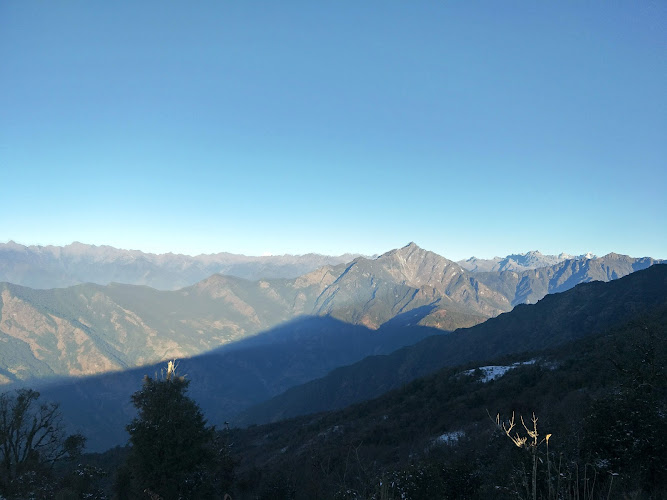

Kanchendsunga CONSERVATION AREA - Third Highest Mountain & Transboundary Landscape
Lelep,Taplejung,Mechi, Tapethok
The third-highest mountain on Earth, Kanchenjunga's 8,586-meter summit towers over eastern Nepal's most remote protected area, a 2,035-square-kilometer sanctuary established in 1997 that sprawls across Taplejung district from subtropical river gorges to perpetual ice. Kanchenjunga Conservation Area forms one node in a transboundary complex linking Nepal's protected areas with Tibet's Qomolangma National Nature Preserve to the north and Sikkim's Khangchendzonga National Park to the east, creating one of Asia's largest contiguous conservation landscapes where snow leopards, red pandas, and Himalayan black bears roam across political boundaries that mean nothing to wildlife.
The mountain itself—called Kumbhkaran Lungur in Limbu language—commands reverence across Buddhist and Hindu traditions. Five treasuries of snow rest in Kanchenjunga's glacial basins, according to Buddhist cosmology: gold, silver, gems, grain, and holy scriptures. The Sikkim royal family considered Kanchenjunga a guardian deity, and climbers traditionally stop short of the summit, leaving the peak inviolate as sacred space. This spiritual dimension infuses the conservation area with meaning beyond ecological values, making protection simultaneously an environmental and religious imperative.
Biodiversity reaches extraordinary levels across dramatic elevation gradients. Approximately 2,000 flowering plant species blanket slopes from temperate rhododendron forests to alpine meadows where gentians and primulas bloom in brief summer explosions of color. The 252 bird species include Himalayan specialties like the satyr tragopan, blood pheasant, and multiple species of rosefinches adapted to high-altitude existence. Mammals number 22 documented species though actual diversity likely exceeds counts: the rare Asian black bear, snow leopards pursuing blue sheep across ridges, red pandas in bamboo thickets, musk deer, Himalayan tahr, and the elusive mainland serow all populate forests and alpine zones.
The Kanchenjunga Base Camp trek ranks among Nepal's most demanding and rewarding routes, a 21-24 day circuit reaching both north and south base camps at approximately 5,000 meters elevation. Starting from Taplejung, the trail climbs through traditional Limbu and Sherpa villages—Tapethok, Hellok, Ghunsa, Khambachen—where stone houses cluster on terraced hillsides and prayer flags snap in wind funneling down glacial valleys. The north base camp (Pang Pema) at 5,143 meters delivers frontal views of Kanchenjunga's north face, a wall of ice and rock so massive it creates its own weather systems. The south base camp (Oktang) at 4,730 meters provides different perspectives across the Yalung Glacier toward satellite peaks like Jannu (7,710m) and Kabru (7,412m).
Cultural encounters equal natural wonders. The Limbu people indigenous to eastern Nepal maintain traditions distinct from better-known Sherpa and Tamang cultures—their own language, Yakthung, their animist religious practices blended with Buddhism, their agricultural systems based on cardamom cultivation beneath forest canopy. Climbing through Limbu villages offers glimpses into lifestyles shaped by terrain and isolation, where electricity arrived only recently and road access remains years or decades away.
Restricted area permits and conservation area permits both required for trekking generate income supporting local communities while limiting visitor numbers. The remoteness helps—reaching Taplejung involves flying to Bhadrapur or Suketar (weather permitting) or enduring marathon bus journeys from Kathmandu, then beginning multi-week treks carrying full camping gear since teahouse infrastructure remains sporadic beyond major villages. Perhaps 2,000-3,000 trekkers annually attempt Kanchenjunga circuits versus 50,000-plus on Annapurna or Everest routes, preserving wilderness character impossible to maintain on crowded trails.
Conservation challenges include trans-boundary coordination for species like snow leopards that range across Nepal-Tibet-Sikkim borders regardless of political geography, climate change impacts through glacier retreat and altered monsoon patterns, and human-wildlife conflict as leopards occasionally prey on livestock from villages bordering the conservation area. Yet Kanchenjunga's protected status remains secure, supported by local communities recognizing both spiritual significance and economic benefits from carefully managed tourism that provides income without overwhelming infrastructure or culture.
For trekkers who reach Pang Pema and watch dawn illuminate Kanchenjunga's north face in shades of rose and gold, the effort required to arrive becomes inseparable from the reward itself. This isn't Everest Base Camp where helicopter tours drop casual visitors for photo opportunities—it's earned through weeks of walking, through acclimatization headaches and freezing predawn starts, through rice and dal eaten twice daily in village teahouses. And precisely because it demands so much, it retains the power to transform those who make the journey, offering not just mountain views but immersion in landscapes and cultures that thrive precisely because they remain difficult to reach.
Park Features & Amenities
♿ Accessibility
- ✓ Wheelchair-accessible car park
- ✓ Wheelchair-accessible entrance
🏃 Activities
- ✓ Hiking
🏗️ Amenities
- ✓ Public toilet
- ✓ Volleyball court
🎠 Children
- ✓ Good for kids
- ✓ Kid-friendly hikes
🐕 Pets
- ✓ Dogs allowed
Visitor Information
🕐 Best Times to Visit
Spring (Mar-May): Pleasant weather, blooming flowers
Autumn (Sep-Nov): Clear skies, comfortable temperatures
Early Morning: Best for wildlife viewing and photography
🗺️ Getting There
By Car: Lelep,Taplejung,Mechi, Tapethok
Public Transport: Local buses and taxis available
Walking: Check distance from city center
💡 Visitor Tips
• Bring water and sun protection
• Wear comfortable walking shoes
• Check weather conditions before visiting
• Bring camera for nature photography
Explore More in Nepal
Nearby Attractions
Popular Activities
Ready to Visit Kanchendsunga CONSERVATION AREA?
Plan your visit to this amazing destination with our comprehensive travel guide and insider tips.
Seasonal Travel Guide
Weather & Best Time
Winter brings cool temperatures (5-15°C) with clear skies and snow-capped peaks. Perfect for mountain views but cold at higher altitudes.
Best Activities:
- Mountain viewing
- Cultural experiences
- Spa and hot springs
- Photography of snow peaks
- Indoor cultural activities
Travel Tips
- Visit during December-February for snow-capped views
- Pack warm clothing for cold temperatures
- Book hotels with heating facilities
- Plan for shorter daylight hours
Packing Suggestions:
- Warm winter clothing
- Thermal layers
- Warm hat and gloves
- Sturdy winter boots
- Hot water bottle
Quick Facts
Best time: Autumn (Sep-Nov)
Duration: 1-3 days
Difficulty: Easy
Cost: Budget-friendly